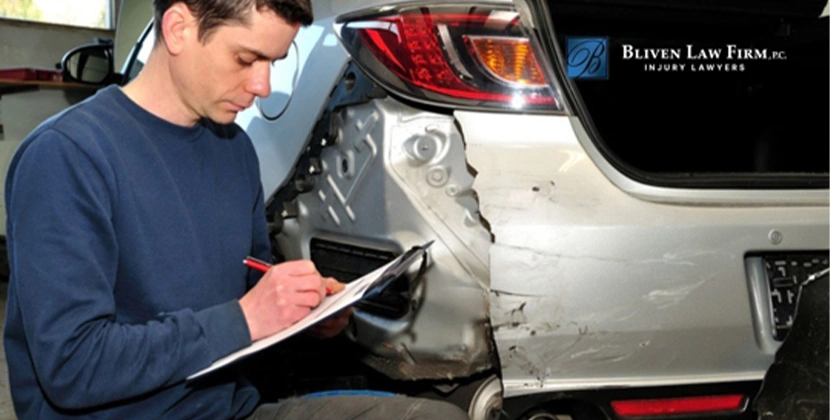Accident Reconstruction & Personal Injury Claims

Unexpected and frequently life-changing accidents can leave victims struggling with mental, emotional, and financial difficulties. For lawyers, accident victims, and insurance companies, understanding the nuances of accident reconstruction and its role in personal injury claims is crucial. This comprehensive guide will unveil the intricate world of accident reconstruction, how it impacts personal injury claims, and why it’s essential for achieving justice and fair compensation.
What Is Accident Reconstruction?
Accident reconstruction is a scientific process determining the events leading up to, during, and following a collision. Experts can recreate the incident by analyzing evidence from the accident scene to understand how it occurred. This process involves various methods, including examining skid marks, vehicle damage, witness statements, and using computer simulations.
Accident reconstruction aims to provide a clear and accurate depiction of the accident, which can be pivotal in legal proceedings. It helps establish liability, understand the mechanics of the collision, and provide evidence to support personal injury claims.
The Importance of Accident Reconstruction in Personal Injury Claims
In personal injury cases, proving fault and the extent of injuries is crucial to securing compensation. Accident reconstruction plays a vital role in this process by offering objective and scientific evidence. Here’s why it matters:
Establishing Liability
Accident reconstruction helps determine who was at fault. By analyzing the speed, direction, and actions of the vehicles involved, experts can identify violations of traffic laws and reckless behavior.
Supporting Injury Claims
Understanding the mechanics of the accident allows for a better correlation between the impact and the injuries sustained. This can validate claims of neck injuries, spinal injuries, or traumatic brain injuries.
Providing Credible Evidence
In court, scientific evidence from accident reconstruction can be more convincing than eyewitness testimonies alone. It adds credibility to the case and supports the arguments made by attorneys.
Key Elements of Accident Reconstruction
Accident reconstruction involves several key elements that work together to piece together the events of a collision. These elements include:
1. Scene Investigation: The first step in accident reconstruction is thoroughly investigating the accident scene. This involves:
- Photographing the Scene: Detailed photographs of the scene, including road conditions, vehicle positions, and any debris, are crucial.
- Measuring Distances: Accurate measurements of skid marks, vehicle distances, and points of impact help understand the accident’s dynamics.
- Collecting Evidence: Gathering evidence like broken parts, paint transfer, and tire marks provides valuable clues.
2. Vehicle Examination: Examining the involved vehicles helps understand the impact forces and the resulting damages. Key aspects include:
- Damage Analysis: Analyzing the extent and location of vehicle damage can indicate the point of impact and the force involved.
- Mechanical Inspection: Checking the mechanical condition of the vehicles, such as brakes and lights, can reveal potential contributing factors.
3. Witness Statements: Statements from witnesses provide firsthand accounts of the accident. These statements are cross-referenced with physical evidence to build a comprehensive picture of the events.
4. Computer Simulations: Advanced computer simulations can recreate the accident in a virtual environment. These simulations consider various factors like vehicle speed, angle of impact, and road conditions to provide a detailed reconstruction.
The Impact of Accident Reconstruction on Insurance Claims
Insurance companies rely heavily on accident reconstruction to assess claims and determine liability. The insights gained from reconstruction influence:
- Claim Approval: Accurate reconstruction helps insurers evaluate the validity of claims and approve legitimate ones promptly.
- Settlement Negotiations: During settlement negotiations, accident reconstruction provides a solid foundation for discussions, leading to fair and just compensation.
- Fraud Detection: Reconstruction can identify discrepancies and inconsistencies in claims, helping insurers detect fraudulent activities.
- Challenges in Accident Reconstruction: Accident reconstruction presents unique difficulties, even if it is a very effective tool. Some common obstacles include:
- Incomplete Evidence: Sometimes, critical evidence may need to be included or compromised, making it challenging to reconstruct the accident accurately.
- Time Constraints: Timely investigation is crucial to preserving evidence. Delays may result in the loss of critical information, compromising the reconstruction’s correctness.
- Expert Availability: Finding qualified, experienced accident reconstruction experts can be challenging, especially in complex cases.
Accident reconstruction is an invaluable process in personal injury claims, offering scientific and objective insights into the dynamics of collisions. Understanding and leveraging accident reconstruction can make a significant difference in achieving justice and fair compensation for lawyers, accident victims, and insurance companies.
If you or someone you know has been involved in an accident, consider consulting with experts in accident reconstruction to strengthen your case. Contact Bliven Law Firm, P.C. at 406-755-6828 for individualized assistance, where skilled lawyers are prepared to help you with their vast experience and dedication to justice.
Explore the benefits of accident reconstruction and ensure every detail is uncovered for a positive outcome.
Let Our Team Be Your Advocates
If you have been injured by a car wreck or suffered any type of serious injury, call our Kalispell personal injury lawyers at 406-755-6828 or fill out the
no-obligation online case form. We will respond promptly. When you hire our firm you will have the confidence of knowing that assisting you and resolving your
situation and claim is our priority. Contact us for your free case evaluation today.

